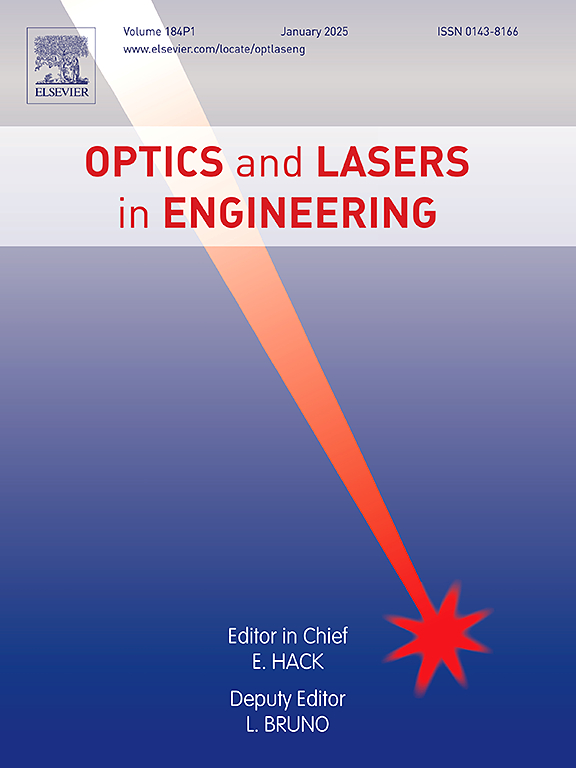Performance evaluation of multi-wavelength visible light underwater optical communication
IF 3.5
2区 工程技术
Q2 OPTICS
引用次数: 0
Abstract
A multi-wavelength underwater wireless optical communication (UWOC) was experimented and studied. The multi-wavelength 450 nm, 518 nm, and 655 nm laser source was used to transmit information in the underwater-air medium up to 17-meter. The data rate used in this study was up to 2.5 Gbps. The optical loss in the 450 nm, 518 nm, and 655 nm in water per meter were 0.55 dB, 0.56 dB, and 0.69 dB, respectively. Several environmental effects such as turbulence and temperature changes were investigated. The bit error rate (BER) value of red, green, and blue-laser can achieve up to , , , respectively under turbulence influence. The laser beam is diverged due to wave and floating bubbles under turbulence influences, especially using a 655 nm red-laser diode. A temperature change did not significantly change the BER value as the turbulence did. The multi-wavelength 450 nm, 518 nm, and 655 nm laser source can achieve bit error rate (BER) under the forward error correction (FEC) limit. This study can further improve the researcher design of their UWOC system for various applications.
多波长可见光水下光通信性能评价
对多波长水下无线光通信(UWOC)进行了实验和研究。使用 450 nm、518 nm 和 655 nm 的多波长激光光源在水下-空气介质中传输信息,最远可达 17 米。这项研究使用的数据传输速率高达 2.5 Gbps。450 nm、518 nm 和 655 nm 在水中每米的光损耗分别为 0.55 dB、0.56 dB 和 0.69 dB。对湍流和温度变化等环境影响进行了研究。在湍流影响下,红、绿、蓝激光的误码率(BER)值分别高达 2.1×10-5、3.1×10-8、1.7×10-12。在湍流影响下,激光束会因波浪和漂浮气泡而发散,特别是使用 655 nm 的红激光二极管时。温度的变化并没有像湍流那样明显改变误码率值。多波长 450 nm、518 nm 和 655 nm 激光源可实现低于前向纠错(FEC)限制的误码率(BER)。这项研究可以进一步改进研究人员的 UWOC 系统设计,使其适用于各种应用。
本文章由计算机程序翻译,如有差异,请以英文原文为准。
求助全文
约1分钟内获得全文
求助全文
来源期刊

Optics and Lasers in Engineering
工程技术-光学
CiteScore
8.90
自引率
8.70%
发文量
384
审稿时长
42 days
期刊介绍:
Optics and Lasers in Engineering aims at providing an international forum for the interchange of information on the development of optical techniques and laser technology in engineering. Emphasis is placed on contributions targeted at the practical use of methods and devices, the development and enhancement of solutions and new theoretical concepts for experimental methods.
Optics and Lasers in Engineering reflects the main areas in which optical methods are being used and developed for an engineering environment. Manuscripts should offer clear evidence of novelty and significance. Papers focusing on parameter optimization or computational issues are not suitable. Similarly, papers focussed on an application rather than the optical method fall outside the journal''s scope. The scope of the journal is defined to include the following:
-Optical Metrology-
Optical Methods for 3D visualization and virtual engineering-
Optical Techniques for Microsystems-
Imaging, Microscopy and Adaptive Optics-
Computational Imaging-
Laser methods in manufacturing-
Integrated optical and photonic sensors-
Optics and Photonics in Life Science-
Hyperspectral and spectroscopic methods-
Infrared and Terahertz techniques
 求助内容:
求助内容: 应助结果提醒方式:
应助结果提醒方式:


